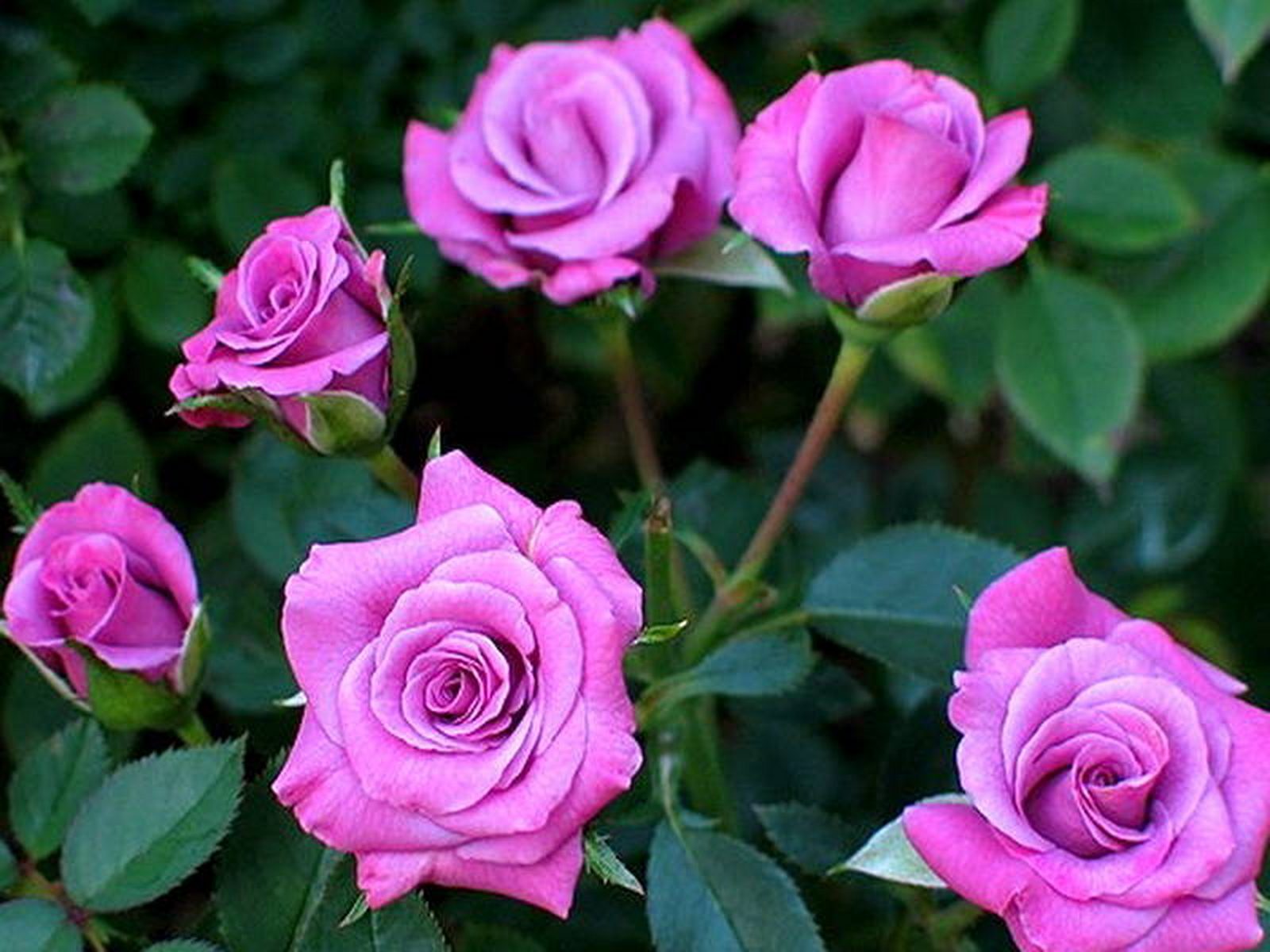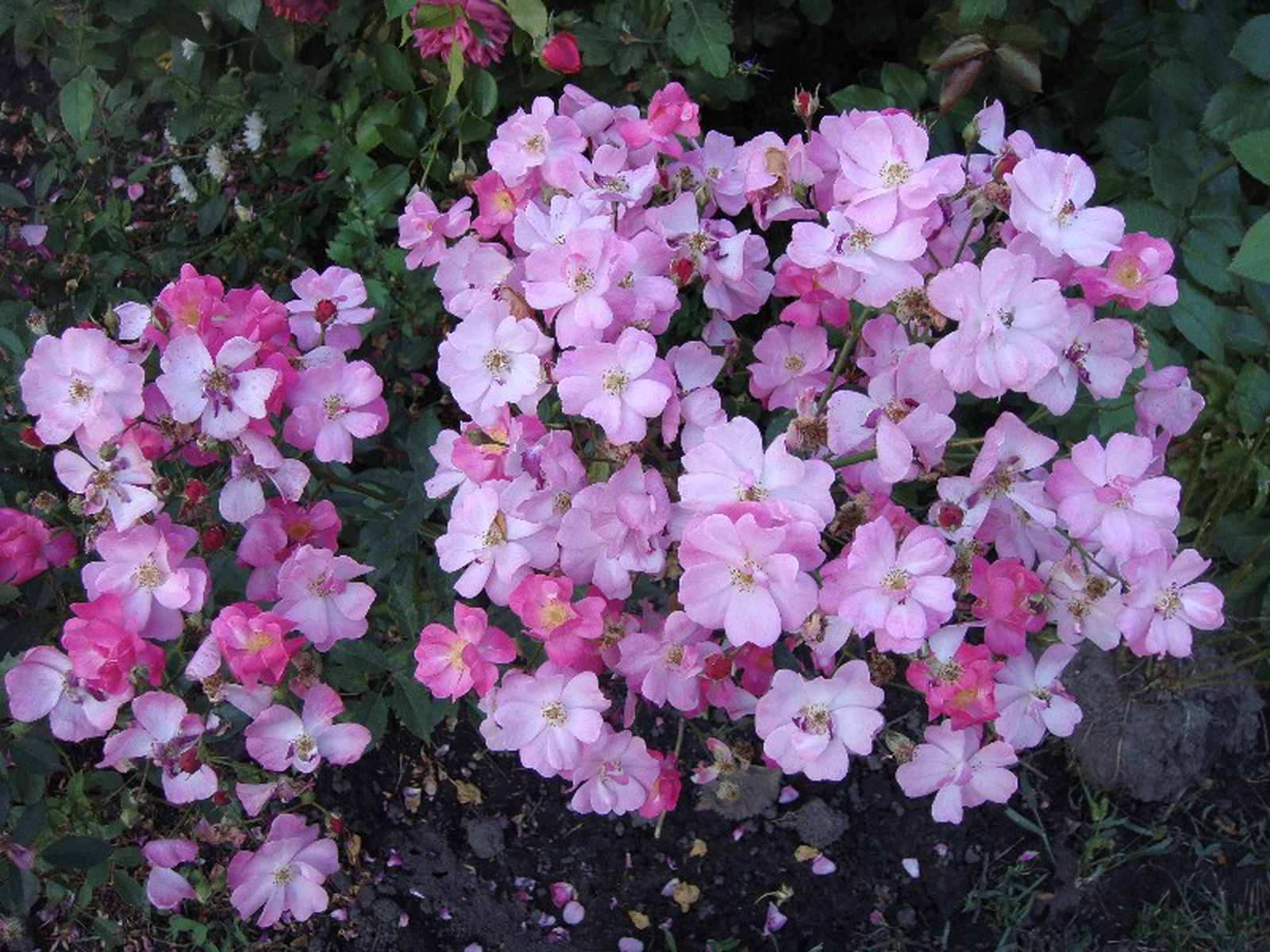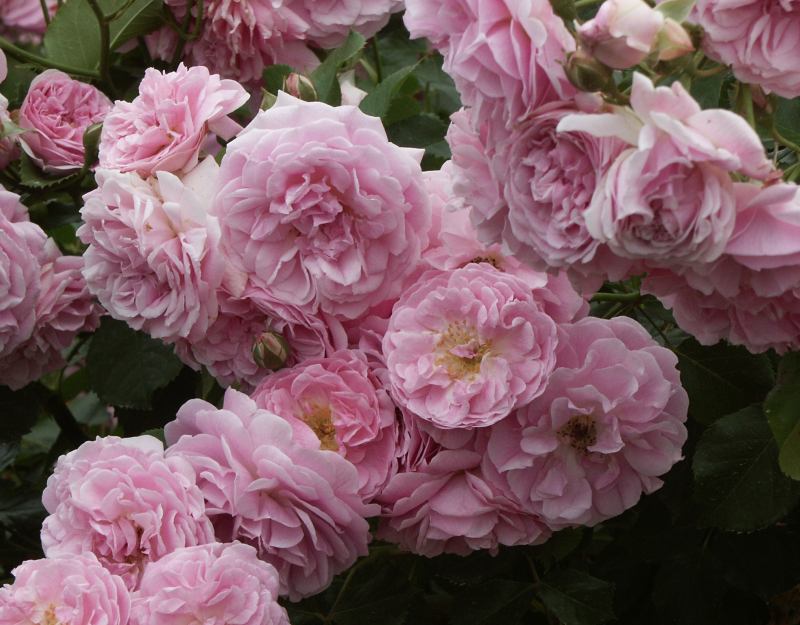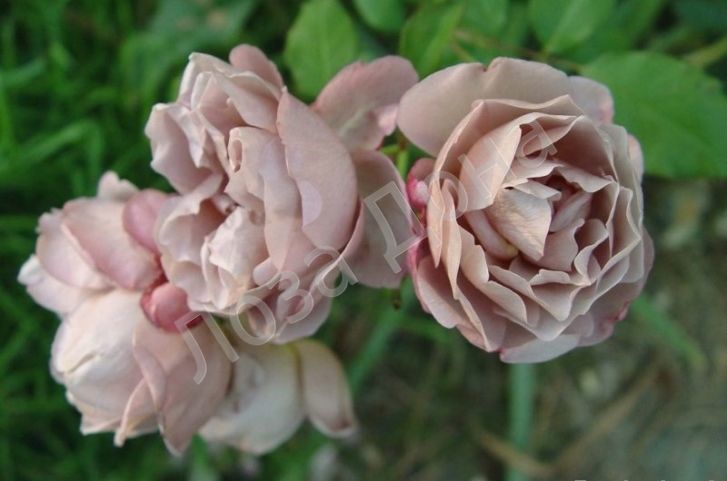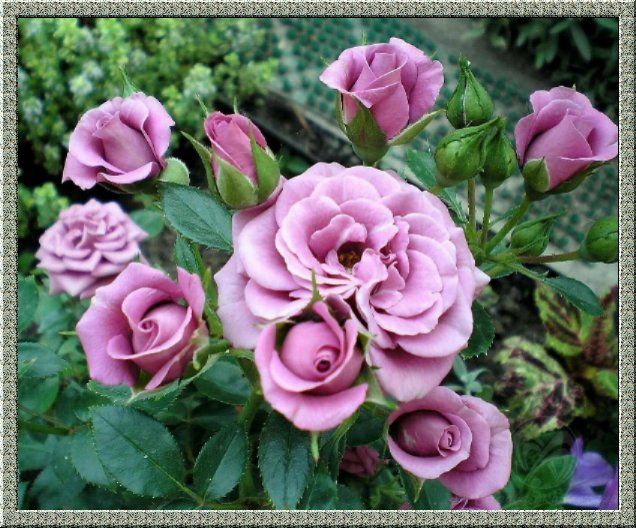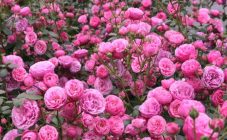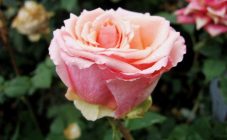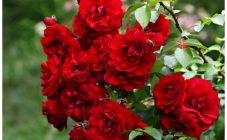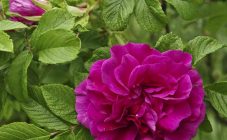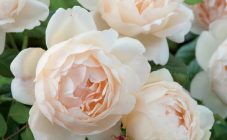Content:
The word "Lavender" in English means "lavender", "lilac", "lilac". It is this color that is typical for the group of standard rose varieties that represent the brand under this name. Rose Lavender is a rather hardy plant, delighting flower growers in many regions of the country with its beauty and winter hardiness.
Reproduction and planting
The beautiful and original Lavender roses are easy to propagate by cuttings. This simple method allows you to preserve all the characteristics of the mother plant:
- Select stems with 3-4 buds. A cut is made under the lower kidney (the angle of inclination must be 45 °), above the upper one - at a right angle.
- The harvested cuttings must be kept for 10 hours in an Epin solution or other biostimulant.
- Cuttings are placed in a prepared container with drainage, fertile soil and a layer of sand, which are well watered and covered with a film. The roots should appear within 30-40 days, after which the seedlings are gradually opened and aired.
It is better to choose a place for planting plants of this group in partial shade. In this case, the flowers will not fade under the hot sun and stay on the stems longer. You should not choose lowlands - cold air accumulates there, waterlogging is observed, which is why plants often get sick. Before planting, the soil is fertilized and improved, not only fertilizers are added, but also sand and peat.
Care and pruning
Rose care should be carried out systematically. The soil around the stems must be constantly loosened, weeds must be removed. Roses should be examined and suspicious leaves and stems removed, and disease prevention should be carried out regularly. In the spring, plants are fed with nitrogen-containing fertilizers, in the summer they need phosphorus and potassium. Watered with warm, settled water.
Most varieties of Lavender roses are characterized by average winter hardiness. Roses can easily tolerate small frosts, so they need to be covered only at stable negative temperatures. You can get a beautiful flowering bush only if you keep it during the winter under a special cover.
Description of varieties
Rose Lavender Dream
Interesting small-flowered rose, garden scrub with a delicate, sweet aroma. The mass of semi-double flowers on a bush, the height of which is rarely less than 120 cm. At the beginning of flowering, the plant, completely covered with lush inflorescences, becomes dark pink, then fades a little and gradually brightens.
The leaves are small, dark green. There are thorns on the shoots. In areas with warm or hot climates, the length of the stems can reach 2.4 m, in cold areas - only up to 1 m.Bush growth is slow at first, then the Lavender Dream rose suddenly turns into a spreading plant with a diameter of up to 2 m. It blooms profusely throughout the whole summer period. One inflorescence can have 15-20 flowers. Sometimes you can find real "umbrellas" in which the number of light lilac fragrant flowers reaches 40 pieces. The fruits are bright red.
The fruits are bright red. The variety has a high resistance to black spot and rain, to MP (powdery mildew) - medium. High frost resistance. The variety is not picky about care, but in hot weather thick "fat" shoots may appear, which must be cut out immediately.
Rose Lavender Lassie
Lavender lassie rose is a striking representative of musk hybrids. Over time, at the will of the owner, it can turn into a gorgeous climbing rose or become a large scrub.
The diameter of lilac and lilac semi-double flowers is 7-8 cm, their shape is flat, saucer-shaped. The width of the bush is 1.5 m. It blooms en masse in early summer, then again in autumn. At this time, the stems droop under the weight of many flowers collected in voluminous brushes. The leaves are shiny, green.
Rose Lavender Lassie is hardy, it can be systematically pruned and shaped in the form of a shrub, decorate flower beds and rose gardens, and combine with other varieties. In some cases, it is beneficial to let the plant along the wall or, as the stems grow, lay them on decorative supports, which allows you to maximize all the advantages of landscape design.
Lavender Lassie has an average winter hardiness. Even in the Non-Black Earth Region, it needs proper shelter, which excludes the possibility of warming up during winter thaws. Of the features of cultivation and care, it can be noted:
- high resistance to most of the major diseases affecting roses;
- exactingness to soils - it is necessary to pre-apply fertilizers, as well as other minerals, sand and peat, in order for the soil to become structured and have good air and water permeability;
- wetlands or stagnant waters should be excluded.
Rose Lavender Pinocchio
The history of the variety begins in 1948. In the USA, Pinocchio and Gray Pearl were crossed. Rose Lavender Pinocchio immediately conquered everyone with its extraordinary color - grayish lavender, with a soft coffee tint. The plant's winter hardiness is average.
Terry flowers, the diameter of which is 8-10 cm, tend to change shades over time, they may appear rich lilac, pink or become lavender. Suddenly turn light brown or even orange. The shape of the flower also changes: from a cup-shaped one smoothly turns into a flat one. The number of petals in one is 28 pieces. Brushes consist of 5-10 colors. Repeated flowering is characteristic. Leaves are light green, matte, medium in size. Lavender Pinocchio bush is sprawling, up to 130 cm high, with thorns on its branches. The width of a semi-spreading bush is up to 1 m. The aroma of flowers is soft, medium saturation.
Disease resistance is average, easily tolerates high humidity and rain. Blooms periodically in waves throughout the season. In the heat, fully blooming flowers quickly crumble. It was this variety that was widely used by breeders to breed brown roses. Can be grown in containers, as well as in flower beds in the form of boles. Looks great in a group.
Rose Lavender Jewel
Connoisseurs know that rose Lavender Jewel is one of the most beautiful miniature roses in the garden. Bred in 1978. It blooms continuously, its delicate lavender-lilac flowers perfectly set off other plants. Tiny flowers are no more than 3-4 cm in diameter, but have 35-40 petals. When blooming, they resemble tea hybrids, when fully open, they become like a floribunda. The Jewel rose bush is strong, compact, up to 40 cm tall in cool climates and rather spreading in hot climates. Flowers retain their shades throughout the entire flowering, they do not fade. Despite the fact that the rose is moderately resistant to powdery mildew and black spot, planted in the Non-Chernozem zone, it almost does not get sick.
Rose Lavender Meilandina is very similar to Jevel. She is the same miniature, the bush rarely exceeds 50 cm, with small lilac flowers. It is often grown in containers. The width of the bush is only about 40 cm. The stems are without thorns. The variety is frost-resistant, has a high resistance to diseases. Resistant to powdery mildew and black spot. Although this variety is not characterized by a very rich aroma, the abundant and continuous flowering completely compensates for it. Dense double flowers with 35-40 petals and up to 6 cm in diameter have a very beautiful shape and are quite compact.
Roses of the Lavender group have a number of characteristics in common: they are undemanding to care and can tolerate frost, allowing them to be planted in areas with a temperate climate. Due to their high resistance to the most common diseases, they grow well in the garden, both in containers and in the ground, and do not require special knowledge or frequent treatments from gardeners. They can be grown even by beginners who first decided to plant beautiful plants on their site.
